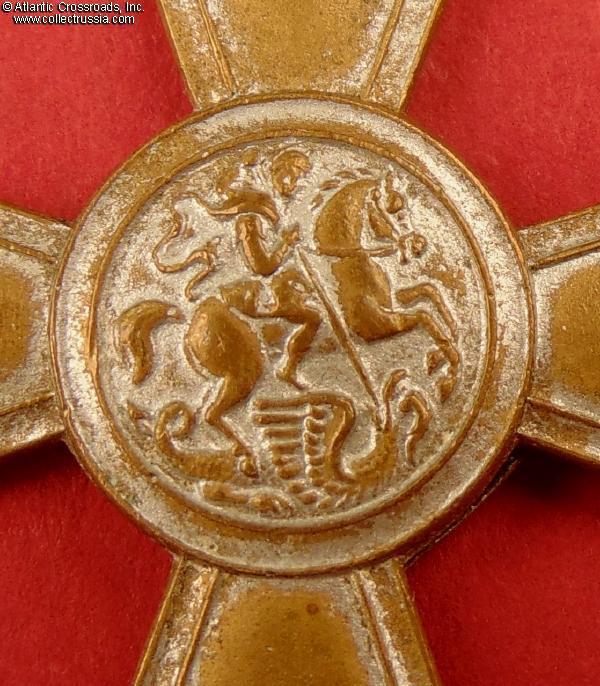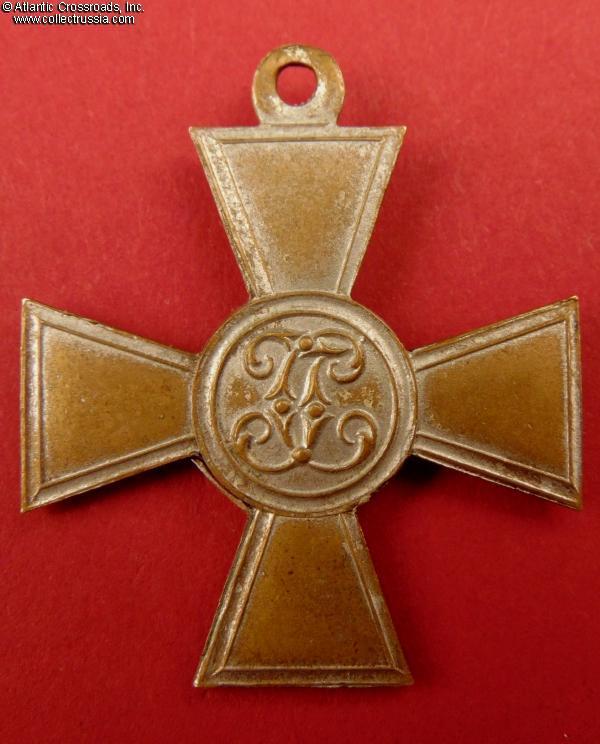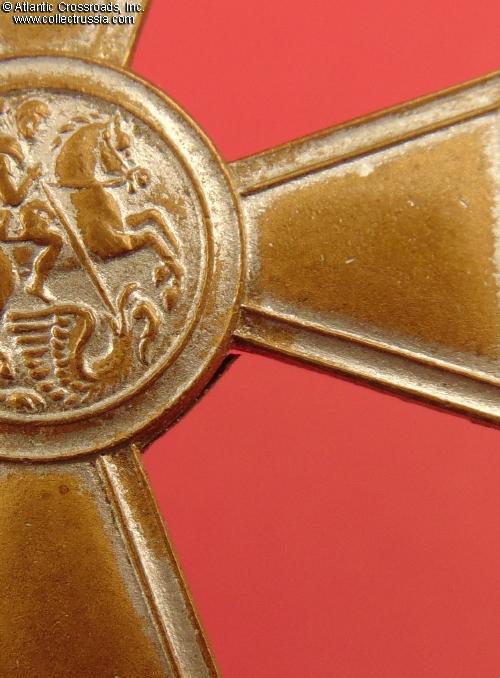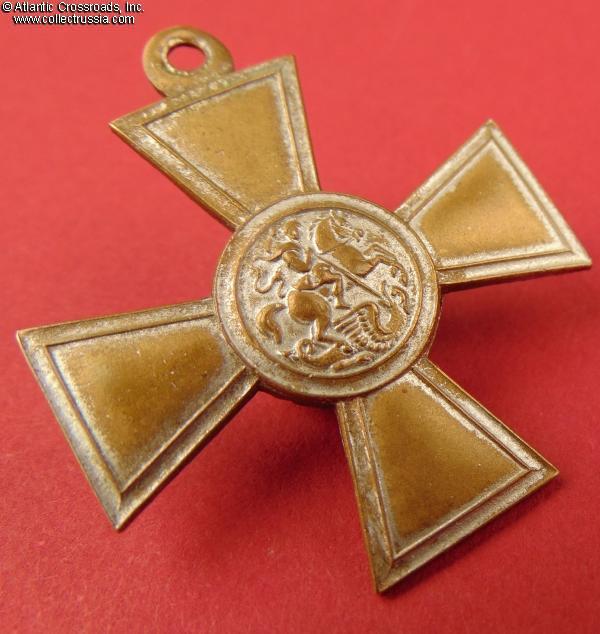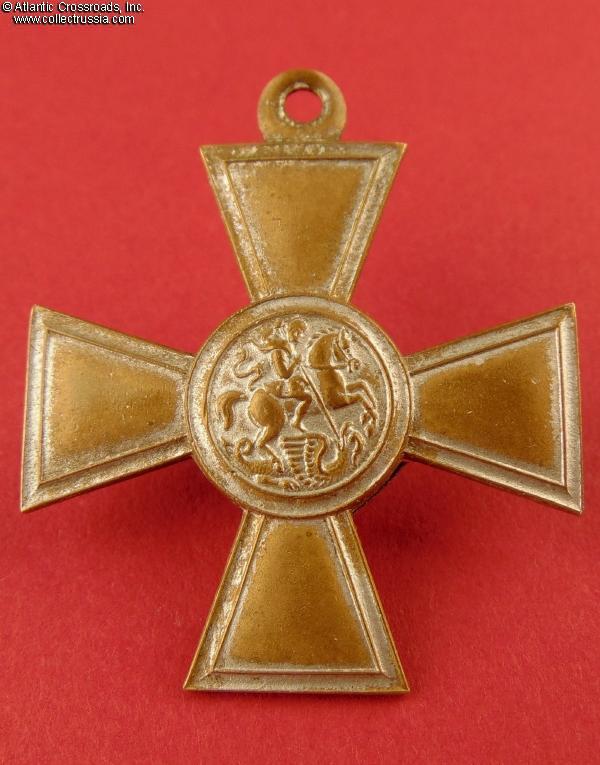
Saint George Cross for Bravery, "Czech" version without the class designation or serial number, early 1920s issue.
In silver-plated brass; measures 42.0 mm tall (incl. eyelet), 36.4 mm wide; weighs 10.3 g not including the suspension. The characteristics of this cross, especially details of the center medallion are drastically different from the St. George crosses produced by the Russian mint. Note in particular the fact that St. George is holding his lance with two hands, and the coiled tail of the dragon. The cipher is also quite different from the state mint version. The features of this cross resemble those produced by the Kuchkin Factory. There are however some small but significant di
In silver-plated brass; measures 42.0 mm tall (incl. eyelet), 36.4 mm wide; weighs 10.3 g not including the suspension. The characteristics of this cross, especially details of the center medallion are drastically different from the St. George crosses produced by the Russian mint. Note in particular the fact that St. George is holding his lance with two hands, and the coiled tail of the dragon. The cipher is also quite different from the state mint version. The features of this cross resemble those produced by the Kuchkin Factory. There are however some small but significant differences from the Kuchkin design e.g. the bird-like wing of the dragon, its smooth tail lacking pronounced segments, its two legs (rather than four), and the peculiar wavy bottom of the Saint's tunic.
In excellent condition. The details of the medallion on both sides are exceptionally crisp, practically pristine. There are no edge knocks, noticeable scratches or significant dings. A very good amount of original silver finish is still present in recessed areas, exhibiting a typical "frosting" pattern from age rather than wear.
According to the article by A. I. Rudichenko provided in his groundbreaking reference guide Russian Imperial Awards of the Civil War Period, the crosses of this kind were die- struck at the Czechoslovak State Mint in 1920. They were intended specifically for the members of the Czech Legion, a famous volunteer unit comprising Czechs and some Slovaks that had fought on the Russian side in WW1.
The original core of the Legion had been Russian citizens of Czech and Slovak ethnicity, while the others had come from the territories of Austro-Hungarian Empire captured by the Russian army early in the war or had been recruited from the POW camps. Following the Russian Revolution in 1917, disintegration of the Eastern front, and the Bolshevik peace accord with the Germans, the surviving members of the Legion took a perilous journey to their home country. They did so by using the only available route - the Trans-Siberian Railway which took them in the opposite direction via eastern Russia, Siberia, and Far East, with the goal of embarking on ships in the port of Vladivostok for the ultimate voyage home.
Along the way, the Communist authorities attempted to disarm the Legion to which the veteran Czech soldiers vehemently (and wisely) resisted - and in so doing, sparked the Civil War in the Russian East. The small but spirited army of Czechs and Slovaks crushed the Bolshevik forces attempting to stop them, captured the gold reserves of the Russian Empire they happened to find on the road, established regional democratically elected governments, negotiated with the White Forces and local warlords, fought off numerous bands, and at the end, played an unfortunate if unavoidable role in turning over the leader of White movement Admiral Kolchak to the "moderate socialists" (whereupon he was promptly executed by the Cheka). In 1920, after two years on the road and nearly incessant fighting, the bulk of the Legion eventually made it to the newly formed Republic of Czechoslovakia. In honor of their incredible Russian Odyssey, the government of the republic awarded the survivors with the Czech-made version of St. George Cross, the quintessential Russian combat award.
/A. I. Rudichenko, Russian Imperial Awards of the Civil War Period , C. 2007, pp. 152-158, 339/
$650.00 Add to cart

